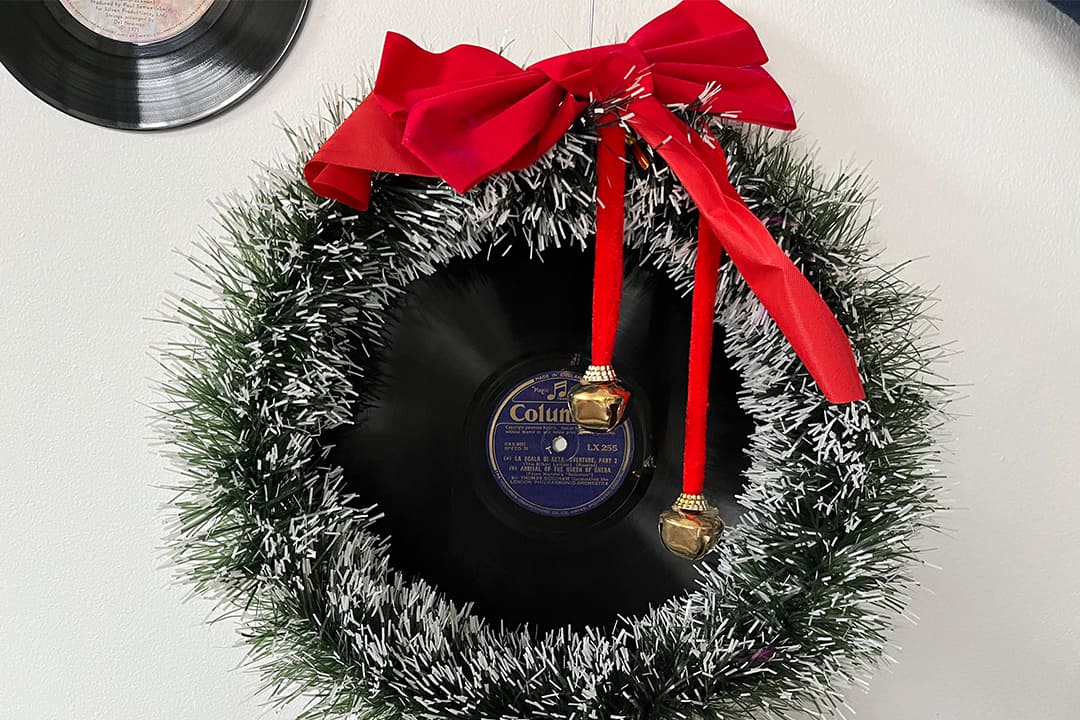The advent of the winter season brings with it the annual deluge of Christmas music. As early as Thanksgiving, radio stations and Spotify playlists are awash with merriment and jingle bells. Not even classic rock radio is immune, as DJs dole out such cheesy covers as Bruce Springsteen’s “Santa Claus is Coming to Town.”
But despite the barrage of pedestrian mall music, the genre is rich and storied, brimming with sundry musical styles dating as far back as the fourth century. Here’s a brief journey through the adorned annals of Christmas music.
Attributed to Saint Ambrose of Milan (fourth century AD), the Latin hymn “Veni redemptor gentium” (“Come Redeemer of the Earth”) is considered the first official Christmas carol in recorded history. Although its austere vocals don’t lend themselves to a good review on Pitchfork, the song has recently found renewed appreciation.
It was under these religious auspices that Christmas-themed hymns continued to develop. John Audelay, a fifteenth-century English priest and poet, is credited with some of the earliest English Christmas carols. It wasn’t until the sixteenth century, which some historians argue marks the inception of the Christmas tree in Germany, that we see the first indelible classics pop up that are still interpreted and performed today. Accrued from ages of folk tradition, such cherished works as “God Rest You Merry, Gentlemen” and “O Christmas Tree” sprang from this era.
As the grandiose and energetic sounds of Baroque music swept across the Western world, composer George Frideric Handel composed his magnum opus, “Messiah,” an oratorio set to a libretto detailing the Biblical story of Christ. Universally recognized for its “Hallelujah” chorus, it was first performed in 1742 during Lent but soon became a mainstay of the Christmas repertoire.
The ensuing decades saw the Baroque period’s eminence wane — the musical world gradually shifted towards new horizons. The Victorian Era, marked by industrialization and technological advancements like the gramophone, which made music more accessible and brought records into people’s homes, birthed the notable Christmas songs “Jingle Bells” (1857) and “Deck the Halls” (1862). This marks the first departure from the genre’s religious roots.
Meanwhile, in 1892 Russia, Tchaikovsky, bereaved over the death of his sister, channelled his grief into a new ballet inspired by childhood vignettes that evoked her memory. Commissioned by the Imperial Mariinsky theatre, “The Nutcracker,” featuring whimsical melodies like the “Dance of the Sugar Plum Fairy,” gradually captivated audiences worldwide, enshrining itself within the holiday season.
The twentieth century heralded a significant transformation in Christmas music, especially in the post-World War II era. The 1950s, marked by economic prosperity and the corresponding commercialization of culture in the West, saw an explosion of Christmas music that strayed further from its religious origins.
Coinciding with the establishment of the music industry and the rise of recorded music as a commodity, professional songwriting became a burgeoning career. Among these professional songwriters were individuals like Broadway lyricist Samuel Cohen, who wrote “Let it Snow,” and Mel Tormé, known for “The Christmas Song.” Despite possibly being more familiar with Hanukkah candles than Christmas trees, both writers deftly captured and conveyed the universal appeal of the holiday spirit.
As record companies pushed to cash in on the glaringly lucrative appeal of the holiday season, contemporary stars like Bing Crosby, Frank Sinatra, and even Elvis Presley recorded covers, many of which remain authoritative of popular Christmas standards.
Music continued to evolve in the following decades, and the ebbs and flows reverberated through the Christmas genre. In 1963, producer Phil Spector lent his signature “Wall of Sound” treatment to the style, recording A Christmas Gift for You From Phil Spector, featuring, among other talents, Darlene Love belting out vocals and shimmying in and out of dazzling falsetto harmonies on “Christmas (Baby Please Come Home).”
The next notable progression for Christmas music came with the popularization of artists composing their own songs. This shift was emblematic of a broader change in the music industry, where singer-songwriters and bands began to assert more creative control over their work. In the realm of Christmas music, this led to a surge of original compositions that reflected these musicians’ personal styles and artistic visions.
Joni Mitchell’s “River” from her 1971 album Blue offered a poignant counterpoint to the typically joyous holiday music. Opening with the universally recognizable “Jingle Bells” chords, the song swiftly descends into a poignant exploration of melancholy and longing during the festive season. Mitchell’s lyrics and sparse arrangement capture the contrast between the outward festivity and her inner sorrow, as she yearns for a river to metaphorically skate away on, escaping her emotional turmoil — in a 2001 interview, she described it as “a Christmas song for people who are lonely at Christmas!”
From this era comes my favourite Christmas song: The Pogues’ “Fairytale of New York,” made even more resonant by the recent passing of Shane MacGowan. Vocally sparring with Kirsty MacColl, MacGowan ruminates on his bygone years with “I could have been someone” — to which MacColl wryly remarks, “Well, so could anyone.” It is a masterful portrayal of the diverse emotions and experiences that people navigate during the holiday season. It isn’t Christmas without The Pogues.
As we moved into the twenty-first century, Christmas music continued to mirror cultural trends, embracing contemporary pop influences. Mariah Carey’s 1994 hit “All I Want for Christmas Is You” exemplifies the seamless blend of festive spirit with modern pop, and set a precedent for twenty-first century artists like Michael Bublé and Justin Bieber. Their fresh takes on holiday classics reflect the genre’s adaptability and enduring appeal.
This evolution from ancient hymns to Joni Mitchell’s introspective “River” and onto the pop vibrancy of Mariah Carey underscores Christmas music’s ability to adapt and evolve, capturing the full spectrum of the holiday spirit.



No comments to display.